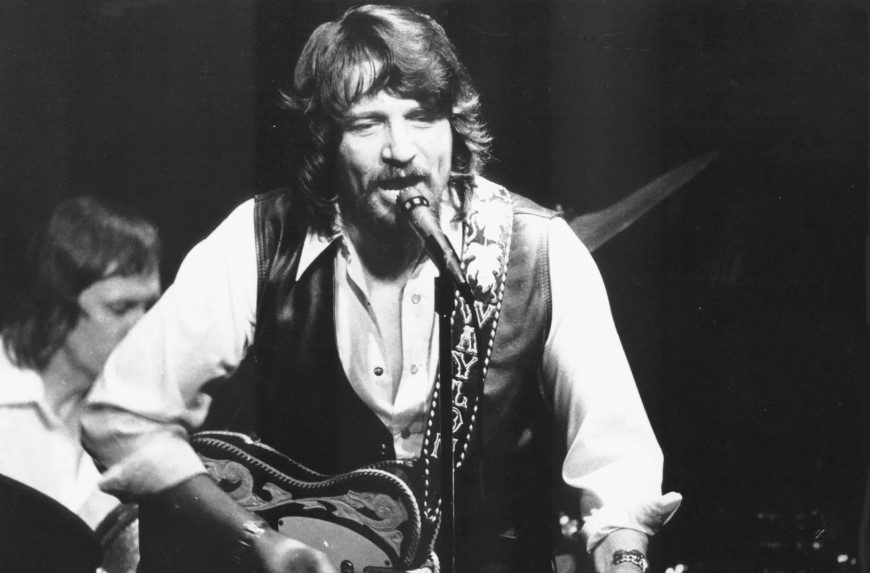
Waylon Jennings and the Golden Era of Outlaw Country
Waylon Jennings emerged as one of the most influential voices in country music during the 1970s, a decade that redefined the genre and pushed it beyond the confines of traditional Nashville sounds. Jennings’ music from this era embodies the essence of outlaw country, blending raw emotion with intricate storytelling, yet maintaining accessibility for a broad audience. His work in the mid-1970s, particularly songs like “Belle of the Ball,” exemplifies his unique ability to infuse vulnerability into a soundscape often dominated by defiance and rugged independence. This period marked a significant transformation in country music, as Jennings and his contemporaries, such as Willie Nelson and Johnny Cash, challenged the polished production norms of mainstream country.
The Artistic Significance of “Belle of the Ball”
Released in 1977 on the album Ol’ Waylon, “Belle of the Ball” showcases Jennings’ mastery in blending romantic longing with understated musicality. Unlike his more defiant outlaw anthems, this track embodies a softer, introspective side of Jennings, revealing a profound sensitivity that resonated with listeners. The song’s narrative explores themes of love, missed opportunity, and quiet reflection, painting an evocative portrait of a man observing life’s fleeting moments with a mix of admiration and regret. The lyrical craftsmanship highlights Jennings’ ability to balance storytelling with emotional resonance, making the song an enduring piece of his repertoire.
Lyrical Depth and Emotional Resonance
“Belle of the Ball” stands out for its poignant and heartfelt lyrics, reflecting a sense of longing rather than triumph. Jennings paints vivid emotional landscapes through his words, emphasizing the bittersweet nature of love and memory. The song narrates the experience of watching someone cherished from afar, capturing the silent ache of unspoken feelings. Lines imbued with melancholic admiration invite listeners to reflect on their own experiences of love, loss, and time’s relentless passage. The song avoids excessive dramatization, instead relying on restraint and authenticity, qualities that elevate it above many contemporaneous love songs. This careful attention to lyrical nuance demonstrates Jennings’ commitment to crafting music that resonates not just superficially but on a deeply personal level.
Instrumentation and Musical Composition
Musically, “Belle of the Ball” exemplifies Jennings’ talent for subtle yet impactful instrumentation. The arrangement relies on traditional country elements, including steel guitar, acoustic rhythm guitar, and understated percussion, which complement rather than overshadow the vocal delivery. The gentle instrumentation creates an intimate atmosphere, allowing the listener to fully absorb the song’s emotional weight. The steel guitar’s mournful twang mirrors the song’s thematic content, while the steady rhythm guitar grounds the piece, maintaining a sense of narrative continuity. This harmonious blend of instruments underscores Jennings’ ability to craft songs where every note enhances the storytelling experience.
Vocal Performance and Delivery
Waylon Jennings’ distinctive vocal timbre is central to the song’s impact. His voice carries a warm, slightly rough quality that conveys both strength and vulnerability. In “Belle of the Ball,” Jennings modulates his delivery with careful restraint, allowing subtle inflections to express longing, admiration, and a touch of sorrow. The authenticity of his performance draws listeners into the narrative, creating a sense of shared experience. Unlike more theatrical interpretations, Jennings’ vocal approach prioritizes emotional honesty over spectacle, establishing a lasting connection with his audience. This nuanced vocal delivery is a hallmark of his mid-1970s work, setting him apart from other artists of the era.
Cultural and Historical Context
The 1970s represented a transformative era for country music, with artists like Jennings rejecting the polished, formulaic Nashville sound in favor of rawer, more personal expression. “Belle of the Ball” reflects this cultural shift, blending traditional musical elements with introspective storytelling. The song captures the sensibilities of the mid-1970s, a time when listeners increasingly sought authenticity and emotional depth in country music. Jennings’ work during this period contributed to the broader outlaw country movement, which emphasized artistic freedom, lyrical sincerity, and a connection to everyday life experiences. By embracing these values, Jennings influenced a generation of musicians while appealing to both traditional and contemporary audiences.
Enduring Legacy and Influence
“Belle of the Ball” remains a definitive example of Waylon Jennings’ artistry, embodying his ability to convey profound emotion through understated musicality. The song’s themes of longing, admiration, and introspection continue to resonate with listeners, reflecting universal human experiences. Jennings’ influence extends beyond his own recordings, inspiring countless artists who seek to balance storytelling, emotional depth, and musical craftsmanship. The enduring popularity of “Belle of the Ball” attests to Jennings’ capacity to create music that transcends temporal boundaries, appealing to both longtime fans and new listeners discovering his work for the first time.
Why “Belle of the Ball” Matters Today
Even decades after its release, “Belle of the Ball” continues to captivate audiences with its honesty and emotional richness. In an era dominated by digital production and high-tempo music, Jennings’ mid-1970s recordings remind us of the power of simplicity, storytelling, and heartfelt performance. Modern country artists frequently cite Jennings’ approach to lyricism and vocal expression as a blueprint for creating music that resonates on multiple levels. The song’s timeless appeal lies in its universal themes and impeccable execution, ensuring that it remains a staple of country music history.
Conclusion: Celebrating Jennings’ Mastery
Waylon Jennings’ “Belle of the Ball” stands as a masterclass in emotional storytelling, combining lyrical depth, careful instrumentation, and distinctive vocal delivery. This song exemplifies the best of 1970s outlaw country, capturing the nuanced emotions of longing and reflection while maintaining the authenticity that defines Jennings’ legacy. By exploring the intricate layers of this track, we gain a deeper appreciation for Jennings’ ability to blend narrative and musical artistry seamlessly. As a cornerstone of his mid-1970s catalog, “Belle of the Ball” continues to inspire listeners and artists alike, solidifying Waylon Jennings’ place as one of country music’s most enduring voices.